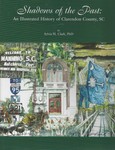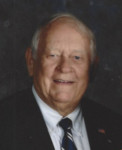


Chapter Four: A New County - Part One
by JERRY ROBERTSON
There is much evidence that America prospered in the 1850, such as when the U.S.Capitol was built and railroad crossing of the Mississippi River. In South Carolina, a new county was born, Clarendon. John Isaac Ingram served in the House of Representatives from 1842 to 1848 and the Senate from 1848 to 1856. He presented a petition signed by seven-eighths of the section's population, overcoming opposition from his fellow Sumter Senator. Ingram's consistent pleas convinced the General Assembly to create a new district by dividing Sumter County thus creating Clarendon County, an independent political subdivision. As mentioned earlier, Clarendon County became independent of Sumter officially on December 19, 1855. The boundaries of this new county followed the same boundaries set up for census purposes in 1785 for the 1800 census.
The Legislature appointed commissioners representing all areas of the new county "to select and purchase a tract of land of not less than six acres nor more than sixty acres, upon which they will lay out a village to be called 'the village of Manning' and determine the site of the public buildings…."
Commissioners were Captain Levi Rhame; R.C. Baker; Captain Joseph Sprott, Colonel John Brock; W.W. Owens; Captain Joseph Burgess; M.T. Brogdon; J.J.Nelson; Samuel Burgess; John McFaddin; Jesse Hill; R.R. Haynesworth and P.S. Worsham.
R.J. Manning, J.B. Brogdon; J.J. Conyera, W.A. Burgess and Levi Rhame were appointed Commission of Public Buildings to "contract for and superintend the building of a Courthouse and Jail in the 'village of Manning…."
The village of Juneville, mentioned in an earlier chapter, was strongly favored to be the county seat, but a survey performed by Captain Copley Burgess showed Juneville to be mostly in Ox Swamp. Captain Burgess then proposed a better location, surveyed the property then gave it to be the county seat. The original plot of Manning was completed in 1856, the courthouse was set in the center of Manning. The original plot may be observed in Mrs. Clarks' publication "Shadows of the Past." Manning County seat of the newly formed Clarendon County was named to honor John Lawrence Manning, Clarendon native and South Carolina governor.
The story of a community is a story of its people. Clarendon was settled by strong individuals, like many of those who settled the frontier towns in the mid 1800s. The environment was harsh and unforgiving, the town lacked rail service, water and communication facilities with the outside. Manning's first mayor was Dr. George Huggins, a city planner who took his job seriously and envisioned Manning to become a garden spot for which it became known, and planned streets long before autos became invented. Dr. Huggins served two terms in the South Carolina House of Representatives and as a surgeon in the War Between the States.
The town of Manning grew quickly. Advertisements in the newspaper, The Clarendon Banner, edited by H.D. Machen indicated many active businesses. Clothing, hardware and groceries were popular items. Also available were lard, tobacco, mackerel and other groceries. Also on display were ladies and men's fancy clothing, fancy groceries and country produce.
This is the fourth chapter of a continuing chronicle of Clarendon County from its early beginning to its present existence. Much of the information and facts is borrowed from Dr. Sylvia H. Clark's excellent publication "Shadows of the Past," a copy may be purchased at the Clarendon County Archives or the Clarendon County Museum & History Center.